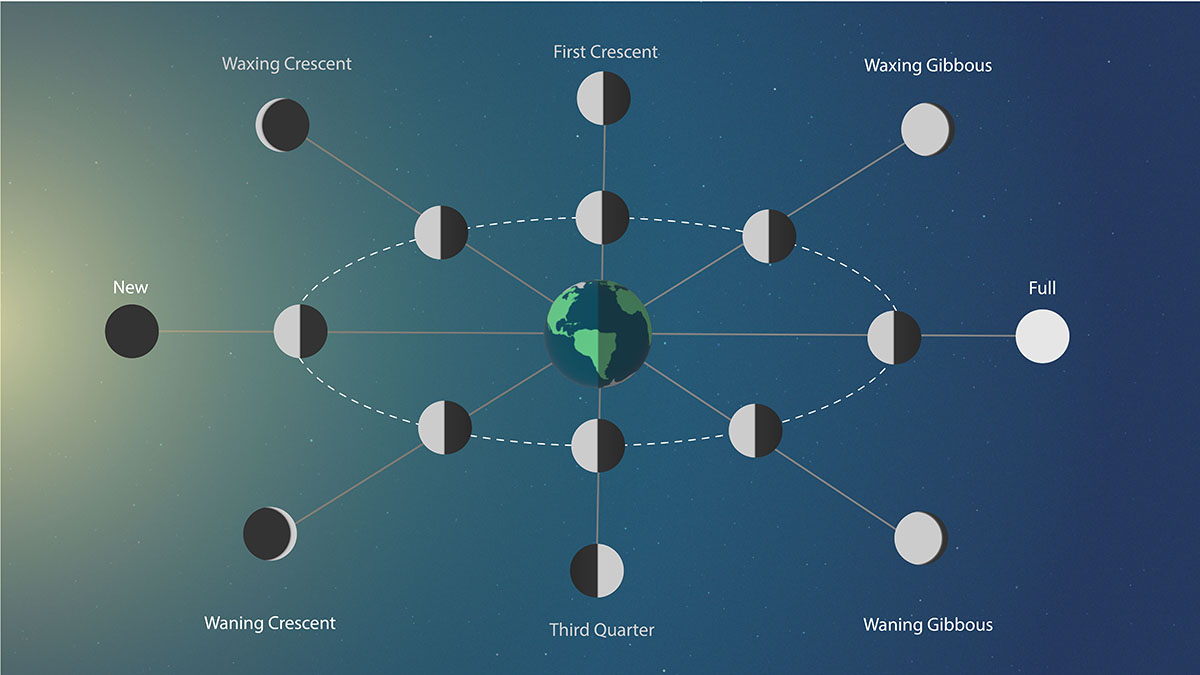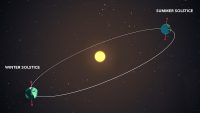When the moon, on its orbit around Earth, reaches the point farthest from the sun, we see a full moon. When the moon is on the side closest to the sun we can’t see the moon reflecting the sun’s light, so it appears dark. This is the new moon. (NASA’s Goddard Space Flight Center/Genna Duberstein)
Home When the moon, on its orbit around Earth, reaches the point farthest from the sun, we see a full moon. When the moon is on the side closest to the sun we can’t see the moon reflecting the sun’s light, so it appears dark. This is the new moon. (NASA’s Goddard Space Flight Center/Genna Duberstein) When the moon, on its orbit around Earth, reaches the point farthest from the sun, we see a full moon. When the moon is on the side closest to the sun we can't see the moon reflecting the sun's light, so it appears dark. This is the new moon. (NASA's Goddard Space Flight Center/Genna Duberstein)




